

A History of Christmas
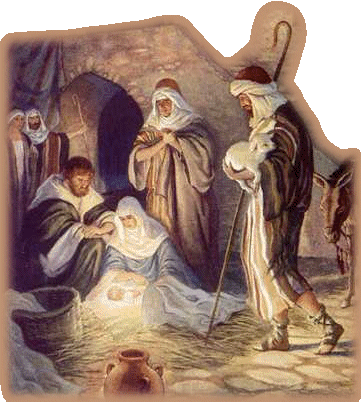
It would be easy enough to imagine Christmas as a simple continuum of tradition dating from the birth of Christ. You'd begin with the nativity story, apply the December 25th date to Jesus' birth, establish the gift-giving precedent of the magi and work from there. Over the centuries, classic Christmas traditions would accumulate: perhaps beginning with the yule log, followed by the Christmas tree and finally winding up in the present day with giant inflatable snowmen and icicle lights.
 The history of Christmas, however, is hardly a continuum. It is a varied and riotous story. The middle of winter has long been a time of celebration around the world. Centuries before the arrival of the man called Jesus, early Europeans celebrated light and birth in the darkest days of winter. Early Europeans marked the year's longest night -- the Winter Solstice -- as the beginning of longer days and the rebirth of the sun. They slaughtered livestock that could not be kept through the winter and feasted from late December through January. Many peoples rejoiced during the winter solstice, when the worst of the winter was behind them and they could look forward to longer days and extended hours of sunlight.
The history of Christmas, however, is hardly a continuum. It is a varied and riotous story. The middle of winter has long been a time of celebration around the world. Centuries before the arrival of the man called Jesus, early Europeans celebrated light and birth in the darkest days of winter. Early Europeans marked the year's longest night -- the Winter Solstice -- as the beginning of longer days and the rebirth of the sun. They slaughtered livestock that could not be kept through the winter and feasted from late December through January. Many peoples rejoiced during the winter solstice, when the worst of the winter was behind them and they could look forward to longer days and extended hours of sunlight.

German pagans honored Oden, a frightening god who flew over settlements at night, blessing some people and cursing others.
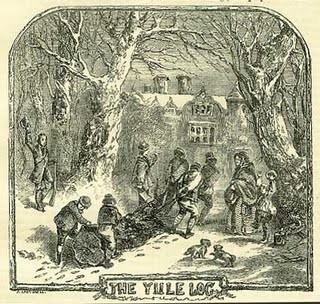 Yule or Yule-tide is a winter festival that was initially celebrated by the historical Germanic peoples as a pagan religious festival. The Norse in Scandinavia celebrated yuletide, and each family burnt a giant log and feasted until it turned to ash. The festival was originally celebrated from December 21st through January. It was later absorbed into, and equated with, the Christian festival of Christmas. The festival was placed on December 25th when the Christian (Julian) calendar was adopted. Some historians claim that the celebration is connected to the Wild Hunt or was influenced by Saturnalia, the Roman winter festival.
Yule or Yule-tide is a winter festival that was initially celebrated by the historical Germanic peoples as a pagan religious festival. The Norse in Scandinavia celebrated yuletide, and each family burnt a giant log and feasted until it turned to ash. The festival was originally celebrated from December 21st through January. It was later absorbed into, and equated with, the Christian festival of Christmas. The festival was placed on December 25th when the Christian (Julian) calendar was adopted. Some historians claim that the celebration is connected to the Wild Hunt or was influenced by Saturnalia, the Roman winter festival.
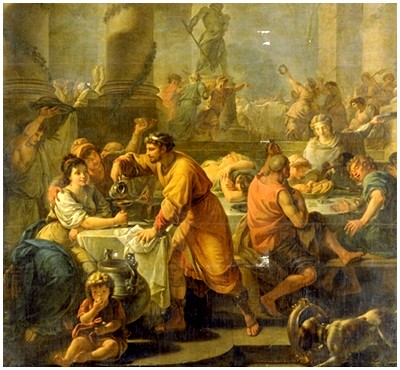
In Rome, people celebrated the raucous festival of Saturnalia from Dec. 17 to Dec. 24 in honor of Saturn, the god of agriculture. The celebration consisted of a carnival-like period of feasting, carousing, gambling, gift-giving and upended social positions. Slaves could don their masters' clothes and refuse orders and children had command over adults. Two other Roman festivals, Juvenalia, a feast in honor of Rome's children, and Mithras, a celebration in honor of the infant god Mithra, also fell near the solstice.
In the early Christian Church, the birth of Christ was not celebrated. During the first three hundred years of the religion the Church in Rome discouraged such a celebration, concerned that it would appear to be more like a Pagan ritual, than a Christian holiday. As church officials attempted to convert Romans to Christianity, Pope Julius I chose December 25th as the date that the birth of Christ would be celebrated with the hope that the choice of that date would be more easily accepted by the Romans.
The prevailing theme in all of the celebrations was the welcoming of the sun and the joy in the rebirth of the world. The Pagans viewed these celebrations of the return of the sun, as the fact that good will prevail over evil and the sun will return to the earth, which makes it easy to see how it could be adapted to the Christian beliefs that Jesus was born to save the world. Jesus Christ has been often referred to as the "Light of the World" and it only seems fitting that the winter solstice when the sun appeared to return to the waiting world, that His birth was celebrated on that day. There has been quite a bit of controversy on the exact time that Jesus was born. Some believe that it was in March, others in September, but the choice of December 25th demonstrates a desire by early Christians to associate the day with a day honored by many as the day that the light was brought to the world. Since Jesus is often considered, "The Light of the World", this appears to be an appropriate day to choose for the celebration of His birth.

Early Christmas, however, was not the peaceful, albeit busy family holiday we know today. Christmas' proximity to Saturnalia resulted in it its absorbing some of the Roman festival's excesses. Christmas in the middle ages featured feasting, drinking, riotous behavior and caroling for money. Religious puritans disapproved of such excess in the name of Christ and considered the holiday blasphemous. Oliver Cromwell went so far as to cancel Christmas when he seized control of England in 1645. Decorations were forbidden and soldiers patrolled the street in search of celebrants cooking meat. Puritans in the American colonies took a similarly dour view of Christmas: Yuletide festivities were outlawed in Boston from 1659 though 1681.
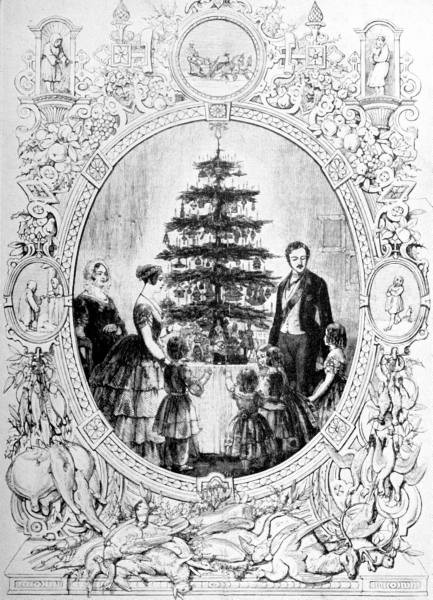
But by the late 18th century and throughout the 19th century, Christmas began to take on the tame associations it has today. New Yorker Washington Irving wrote popular stories about Christmas that invented and appropriated old traditions, presenting them as the customs of the English gentry. Queen Victoria's German husband, Prince Albert, introduced a Christmas tree to Windsor Castle in 1846. An engraving of the couple with their children in front of the tree popularized the custom throughout England and the United States.
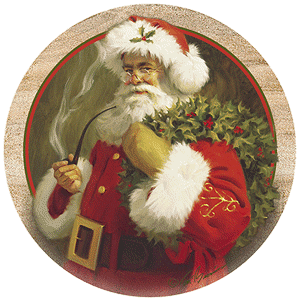
In 1822, Clement Clarke Moore, an Episcopal minister, wrote a long Christmas poem for his three daughters entitled, "An Account of a Visit from St. Nicholas." Moore's poem, which he was initially hesitant to publish due to the frivolous nature of its subject, is largely responsible for our modern image of Santa Claus as a "right jolly old elf" with a portly figure and the supernatural ability to ascend a chimney with a mere nod of his head! Although some of Moore's imagery was probably borrowed from other sources, his poem helped to popularize Christmas Eve – Santa Claus waiting for the children to get to sleep the now-familiar idea of a Santa Claus who flew from house to house on Christmas Eve – in "a miniature sleigh" led by eight flying reindeer, whom he also named – leaving presents for deserving children.
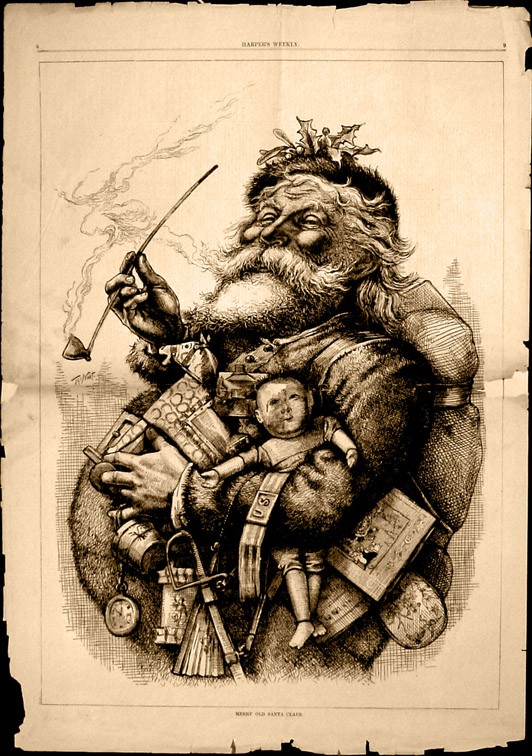
"An Account of a Visit from St. Nicholas," created a new and immediately popular American icon. In 1881, political cartoonist Thomas Nast drew on Moore's poem to create the first likeness that matches our modern image of Santa Claus. His cartoon, which appeared in Harper's Weekly, depicted Santa as a rotund, cheerful man with a full, white beard, holding a sack laden with toys for lucky children. It is Nast who gave Santa his bright red suit trimmed with white fur, North Pole workshop, elves, and his wife, Mrs. Claus.
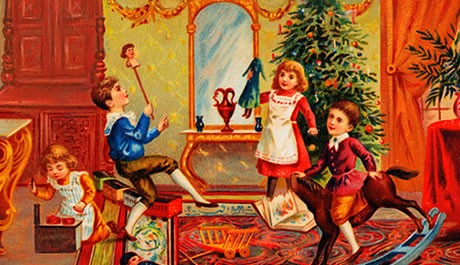 Also around this time, English author Charles Dickens created the classic holiday tale, A Christmas Carol. The story's message-the importance of charity and good will towards all humankind-struck a powerful chord in the United States and England and showed members of Victorian society the benefits of celebrating the holiday.
Also around this time, English author Charles Dickens created the classic holiday tale, A Christmas Carol. The story's message-the importance of charity and good will towards all humankind-struck a powerful chord in the United States and England and showed members of Victorian society the benefits of celebrating the holiday.
The family was also becoming less disciplined and more sensitive to the emotional needs of children during the early 1800s. Christmas provided families with a day when they could lavish attention-and gifts-on their children without appearing to "spoil" them.
As Americans began to embrace Christmas as a perfect family holiday, old customs were unearthed. People looked toward recent immigrants and Catholic and Episcopalian churches to see how the day should be celebrated. In the next 100 years, Americans built a Christmas tradition all their own that included pieces of many other customs, including decorating trees, sending holiday cards, and gift-giving.
Although most families quickly bought into the idea that they were celebrating Christmas how it had been done for centuries, Americans had really re-invented a holiday to fill the cultural needs of a growing nation.


December 16 - 24, 2014
On each night of Hanukkah, the menorah is lit to commemorate a miracle which occurred after the Jews proclaimed victory over the Syrian armies in 165 B.C.E. When Jews came to rededicate the Temple-which had been defiled by the Syrians-they found only one small flask of oil with which to light the menorah. This flask contained only enough oil for one day, yet the lamp burned for eight days (by which time a fresh supply of oil was obtained). – In Israel, the Hanukkah menorah is called the Hanukiyah
Menorahs come in all shapes and sizes. The only requirement is that the flames are separated enough so that they will not look too big and resemble a pagan bonfire.
Ancient menorahs were made of clay. They consisted of small, pearl shaped vessels, each with its own wick, which were arranged side-by-side.
Today's menorah, which stands on a base from which the branches sprout, resembles the holy Temple's menorah and started to appear towards the end of the Middle Ages.
To read more about Hanukkah click HERE
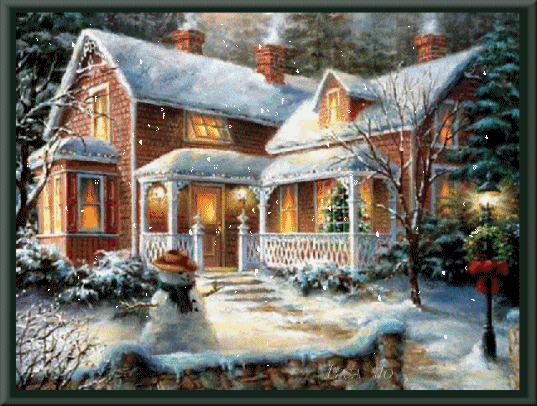
Christmas Past
A Christmas Poem by Carice Williams
Each Christmas I remember
The ones of long ago;
I see our mantelpiece adorned
With stockings in a row.
Each Christmas finds me dreaming
Of days that used to be,
When we hid presents here and there,
For all the family.
Each Christmas I remember
The fragrance in the air,
Of roasting turkey and mince pies
And cookies everywhere.
Each Christmas finds me longing
For Christmases now past,
And I am back in childhood
As long as memories last.
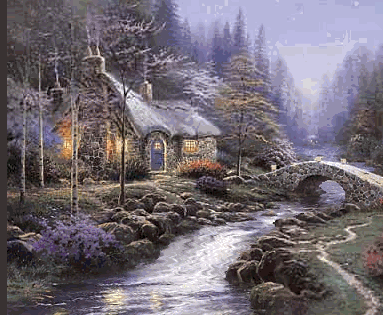

 Mistletoe Lore (click the mistletoe)
Mistletoe Lore (click the mistletoe)
Click HERE to read about - Christmas Symbols, Folklore and More
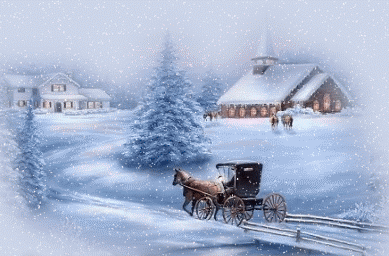
'Twas The Night Before Christmas
A Christmas Poem by Pastor Jim Kamerer
'Twas the night before Christmas and as I looked round my tent,
I couldn't believe all the money I'd spent
For trains and dolls, for trinkets and toys
Some for the girls and some for the boys.
I looked round once more to be sure things were right;
The kids were all in bed for the night.
I set up the track for the train I bought Ted,
The train went round twice and the battery went dead.
I put on my cap, my gloves, and my coat;
I went to Ames and over to Zayre.
You guess it my friend, no batteries there!
As I left the store a thought came to me,
I had one in the remote of the color TV.
Well, I placed that remote in my wife's favorite chair
I was ready for Christmas with hours to spare.
When out came my wife and punched that remote
And then said to me, "The TV's broke!"
So on with the coat, the gloves, and the cap
Out in the cold about ready to snap.
I went to K-Mart and stood in that line
From 8:35 'til a quarter past nine.
As I came to the checkout, my heart leaped with glee --
There was that one lonesome battery just waiting for me.
When from my behind I seen this hand slip
And grab that battery with a real tight grip.
I wheeled around and what did I see?
This giant of a man glaring down at me.
Well, I remembered an ad I had seen on TV
Buy a Big Mac, get your batteries free.
So, I bought me a burger I didn't want...
They were out of batteries, so on with the hunt.
I finally found one at Servi-Star,
Paid for my purchase and made for my car.
When I entered the door of my humble shack,
My wife said, "What's this battery for I found in the sack?"
I was out there in the press, the push, and the greed
To buy me a battery I didn't even need.
At last I relaxed in my easy chair,
When this still small voice came out of somewhere.
"You're ready for Christmas with toys, tinsel, and tree
You've got it all together, but what about me?"
I fell on my knees and cried, "God, what have I done?"
I got caught up in the madness and neglected your Son.
The best gift of all you've given for free
Your Son, Jesus Christ, for sinners like me.
You sent Him to suffer the shame and the loss,
To shed his life's blood for me on the cross.
Well friend, I'll never forget ere I rest 'neath the sod,
The greatest of gifts is given by God.

“When Christmas fires are burning,
Old memories come and go,
Like light and shadows playing,
Within the firelight glow,
a magic scene appears,
Dear faces smile and beckon, from out of other years.”
~Martha Eleanor Barth~
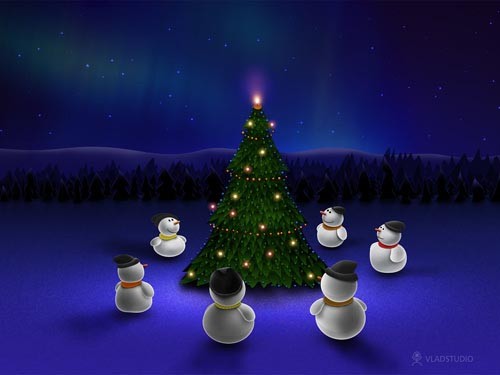
O Christmas tree, O Christmas tree!
Thou tree most fair and lovely!
Oh Christmas tree, O Christmas tree!
Thou tree most fair and lovely!
The sight of thee at Christmastide
Spreads hope and gladness far and wide
Oh Christmas tree, O Christmas tree
Thou tree most fair and lovely!
O Christmas tree, O Christmas tree!
Thou hast a wondrous message:
O Christmas tree, O Christmas tree!
Thou hast a wondrous message:
Thou dost proclaim the Saviour's birth
Good will to men and peace on earth
O Christmas tree, O Christmas tree!
Thou hast a wondrous message
O Christmas tree, O Christmas tree!
You stand in verdant beauty
O Christmas tree, O Christmas tree!
You stand in verdant beauty
Your boughs are green in summer's glow
And do not fade in winter's snow
O Christmas tree, O Christmas tree!
You stand in verdant beauty
O Christmas tree, O Christmas tree!
How laden are your branches
O Christmas tree, O Christmas tree!
Your presence here enhances
Your silver star does glisten bright
Reflecting all the candlelight
O Christmas tree, O Christmas tree!
How laden are your branches
O Christmas tree, O Christmas tree
You fill all hearts with gaiety
O Christmas tree, O Christmas tree
You fill all hearts with gaiety
On Christmas Day you stand so tall
Affording joy to one and all
O Christmas tree, O Christmas tree
You fill all hearts with gaiety
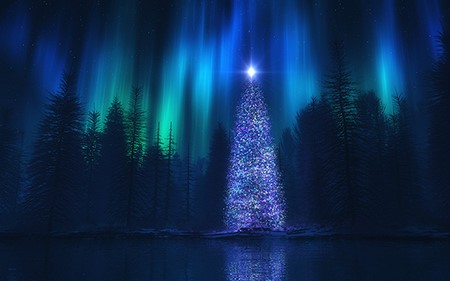

Rudolph, "the most famous reindeer of all," was born over a hundred years after his eight flying counterparts. The red-nosed wonder was the creation of Robert L. May, a copywriter at the Montgomery Ward department store.
In 1939, May wrote a Christmas-themed story-poem to help bring holiday traffic into his store. Using a similar rhyme pattern to Moore's "'Twas the Night Before Christmas," May told the story of Rudolph, a young reindeer who was teased by the other deer because of his large, glowing, red nose. But, When Christmas Eve turned foggy and Santa worried that he wouldn't be able to deliver gifts that night, the former outcast saved Christmas by leading the sleigh by the light of his red nose. Rudolph's message—that given the opportunity, a liability can be turned into an asset—proved popular.
Montgomery Ward sold almost two and a half million copies of the story in 1939. When it was reissued in 1946, the book sold over three and half million copies. Several years later, one of May's friends, Johnny Marks, wrote a short song based on Rudolph's story (1949). It was recorded by Gene Autry and sold over two million copies. Since then, the story has been translated into 25 languages and been made into a television movie, narrated by Burl Ives, which has charmed audiences every year since 1964.

Christmas Joys
Evergreen boughs that fill our homes
With fragrant Christmas scents,
Hearts filled with the loving glow
That Christmas represents;
Christmas cookies, turkeys stuffed,
Festive holly berry,
Little faces bright with joy,
Loved ones being merry;
Parties, songs, beribboned gifts,
Silver bells that tinkle,
Christmas trees and ornaments,
Colorful lights that twinkle;
Relatives waiting with open arms
To smile and hug and kiss us;
These are some of the special joys
That come along with Christmas.
By Joanna Fuchs
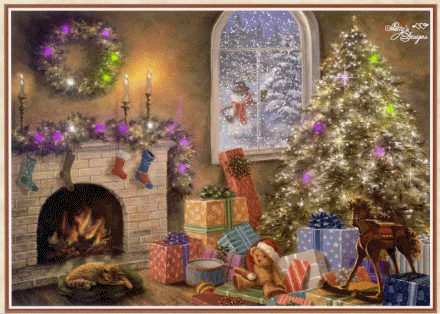
The Night Before Christmas
by Samuel Clemens
'Twas the night before Christmas, when all through the house
Not a creature was stirring, not even a mouse;
The stockings were hung by the chimney with care,
In hopes that St. Nicholas soon would be there;
The children were nestled all snug in their beds;
While visions of sugar-plums danced in their heads;
And mamma in her 'kerchief, and I in my cap,
Had just settled down for a long winter's nap,
When out on the lawn there arose such a clatter,
I sprang from the bed to see what was the matter.
Away to the window I flew like a flash,
Tore open the shutters and threw up the sash.
The moon on the breast of the new-fallen snow
Gave the lustre of mid-day to objects below,
When, what to my wondering eyes should appear,
But a miniature sleigh, and eight tiny reindeer,
With a little old driver, so lively and quick,
I knew in a moment it must be St. Nick.
More rapid than eagles his coursers they came,
And he whistled, and shouted, and called them by name;
"Now, DASHER! now, DANCER! now, PRANCER and VIXEN!
On, COMET! on CUPID! on, DONDER and BLITZEN!
To the top of the porch! to the top of the wall!
Now dash away! dash away! dash away all!"
As dry leaves that before the wild hurricane fly,
When they meet with an obstacle, mount to the sky,
So up to the house-top the coursers they flew,
With the sleigh full of toys, and St. Nicholas too.
And then, in a twinkling, I heard on the roof
The prancing and pawing of each little hoof
As I drew in my hand, and was turning around,
Down the chimney St. Nicholas came with a bound.
He was dressed all in fur, from his head to his foot,
And his clothes were all tarnished with ashes and soot;
A bundle of toys he had flung on his back,
And he looked like a peddler just opening his pack.
His eyes -- how they twinkled! his dimples how merry!
His cheeks were like roses, his nose like a cherry!
His droll little mouth was drawn up like a bow,
And the beard of his chin was as white as the snow;
The stump of a pipe he held tight in his teeth,
And the smoke it encircled his head like a wreath;
He had a broad face and a little round belly,
That shook, when he laughed like a bowlful of jelly.
And I laughed when I saw him, in spite of myself;
A wink of his eye and a twist of his head,
Soon gave me to know I had nothing to dread;
He spoke not a word, but went straight to his work,
And filled all the stocking, then turned with a jerk,
And laying his finger aside of his nose,
And giving a nod, up the chimney he rose;
He sprang to his sleigh, to his team gave a whistle,
And away they all flew like the down of a thistle.
But I heard him exclaim, ere he drove out of sight,
"MERRY CHRISTMAS TO ALL,
AND TO ALL A GOOD-NIGHT."
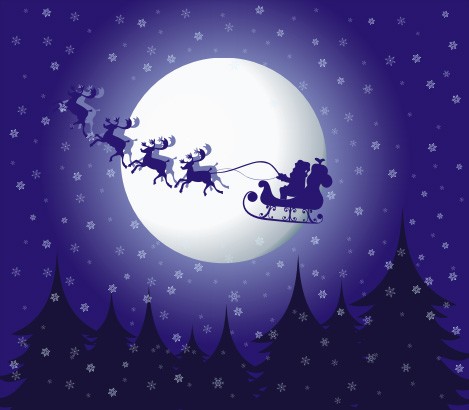
.gif)
The Twelve Days of Christmas

On the first day of Christmas,
my true love sent to me
A partridge in a pear tree.
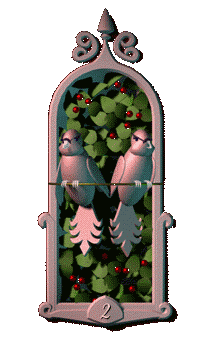
On the second day of Christmas,
my true love sent to me Two turtle doves,
And a partridge in a pear tree.
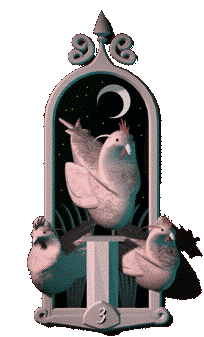
On the third day of Christmas,
my true love sent to me
Three French hens,
Two turtle doves,
And a partridge in a pear tree.
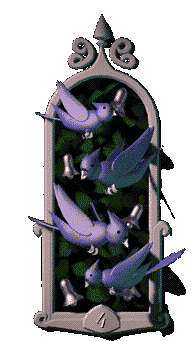
On the fourth day of Christmas,
my true love sent to me
Four calling birds,
Three French hens,
Two turtle doves,
And a partridge in a pear tree.
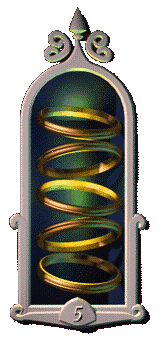 On the fifth day of Christmas,
On the fifth day of Christmas,
my true love sent to me
Five golden rings,
Four calling birds,
Three French hens,
Two turtle doves,
And a partridge in a pear tree.
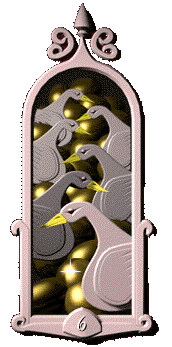 On the sixth day of Christmas,
On the sixth day of Christmas,
my true love sent to me
Six geese a-laying,
Five golden rings,
Four calling birds,
Three French hens,
Two turtle doves,
And a partridge in a pear tree.
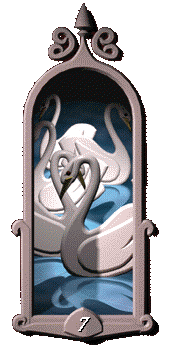 On the seventh day of Christmas,
On the seventh day of Christmas,
my true love sent to me
Seven swans a-swimming,
Six geese a-laying,
Five golden rings,
Four calling birds,
Three French hens,
Two turtle doves,
And a partridge in a pear tree.
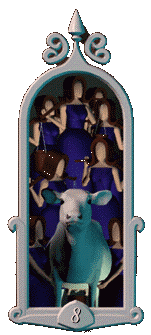 On the eighth day of Christmas,
On the eighth day of Christmas,
my true love sent to me
Eight maids a-milking,
Seven swans a-swimming,
Six geese a-laying,
Five golden rings,
Four calling birds,
Three French hens,
Two turtle doves,
And a partridge in a pear tree.
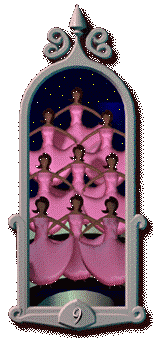 On the ninth day of Christmas,
On the ninth day of Christmas,
my true love sent to me
Nine ladies dancing,
Eight maids a-milking,
Seven swans a-swimming,
Six geese a-laying,
Five golden rings,
Four calling birds,
Three French hens,
Two turtle doves,
And a partridge in a pear tree.
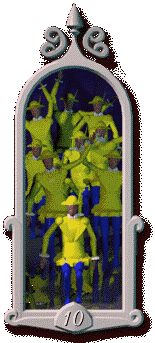 On the tenth day of Christmas,
On the tenth day of Christmas,
my true love sent to me
Ten lords a-leaping,
Nine ladies dancing,
Eight maids a-milking,
Seven swans a-swimming,
Six geese a-laying,
Five golden rings,
Four calling birds,
Three French hens,
Two turtle doves,
And a partridge in a pear tree.
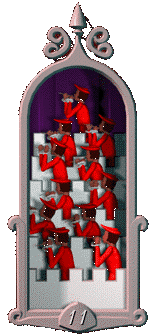 On the eleventh day of Christmas,
On the eleventh day of Christmas,
my true love sent to me
Eleven pipers piping,
Ten lords a-leaping,
Nine ladies dancing,
Eight maids a-milking,
Seven swans a-swimming,
Six geese a-laying,
Five golden rings,
Four calling birds,
Three French hens,
Two turtle doves,
And a partridge in a pear tree.
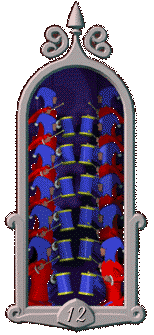 On the twelfth day of Christmas,
On the twelfth day of Christmas,
my true love sent to me
Twelve drummers drumming,
Eleven pipers piping,
Ten lords a-leaping,
Nine ladies dancing,
Eight maids a-milking,
Seven swans a-swimming,
Six geese a-laying,
Five golden rings,
Four calling birds,
Three French hens,
Two turtle doves,
And a partridge in a pear tree!
.gif)


Christmas Facts
- Each year, 30-35 million real Christmas trees are sold in the United States alone. There are 21,000 Christmas tree growers in the United States, and trees usually grow for about 15 years before they are sold.
- Today, in the Greek and Russian orthodox churches, Christmas is celebrated 13 days after the 25th, which is also referred to as the Epiphany or Three Kings Day. This is the day it is believed that the three wise men finally found Jesus in the manger.
- In the Middle Ages, Christmas celebrations were rowdy and raucous—a lot like today's Mardi Gras parties.
- From 1659 to 1681, the celebration of Christmas was outlawed in Boston, and law-breakers were fined five shillings.
- Christmas wasn't a holiday in early America—in fact Congress was in session on December 25, 1789, the country's first Christmas under the new constitution.
- Christmas was declared a federal holiday in the United States on June 26, 1870.
- The first eggnog made in the United States was consumed in Captain John Smith's 1607 Jamestown settlement.
- Poinsettia plants are named after Joel R. Poinsett, an American minister to Mexico, who brought the red-and-green plant from Mexico to America in 1828.
- The Salvation Army has been sending Santa Claus-clad donation collectors into the streets since the 1890s.
- Rudolph, "the most famous reindeer of all," was the product of Robert L. May's imagination in 1939. The copywriter wrote a poem about the reindeer to help lure customers into the Montgomery Ward department store.
- Construction workers started the Rockefeller Center Christmas tree tradition in 1931.
and did you know that....
- America’s first recipe for Christmas cakes dates back to 1796.
- In Australia, the turkey is eaten cold.
- In the old times, sugar was very expensive; therefore, Christmas cakes were a luxury.
- In Denmark, they put hot porridge outside for the pixies on Christmas Eve.
- The first gingerbread man is credited to the court of Queen Elizabeth I, who favored important visitors with charming gingerbread likenesses of themselves.

Christmas Receipes
2 quarts apple cider
1/2 cup brown sugar
Dash of salt
1 teaspoon dried ginger
1 teaspoon cloves
1/2 teaspoon nutmeg
1/2 teaspoon cinnamon
cinnamon sticks
Combine cider, sugar and salt in a saucepan. In a small piece of cheesecloth, combine spices, and tie off. Add spice packet to cider mixture, and slowly bring to a boil, then cover and simmer for 18-20 minutes. Remove spices.
Serve hot cider in mugs with cinnamon sticks.

Mom's Apple Pie
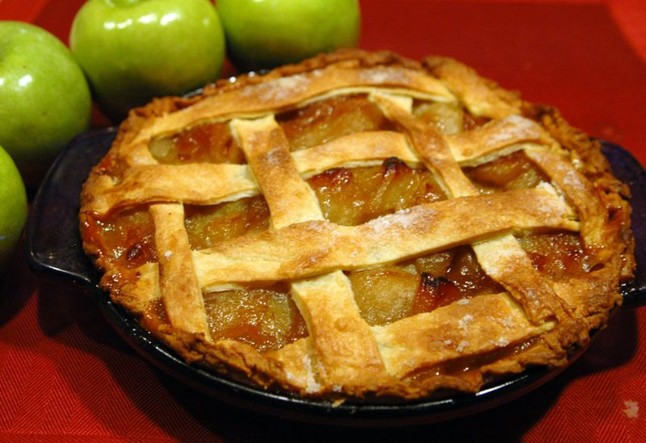
6-8 tart apples (medium to large)
1 1/2 cups sugar
1 teaspoon cinnamon (or to taste)
1/4 teaspoon nutmeg (or to taste)
Dash salt
3/4 cups flour
1 1/4 sticks of butter
Frozen pie crust (bottom only)
Preheat oven to 400 degrees F.
To prepare filling, peel and thinly slice apples. Combine 1/2 cup sugar, 1/4 cup flour, spices and salt and toss with apples. Spoon filling into pie crust.
To prepare topping, mix butter, 1 cup sugar, and 1/2 cups flour in your hands to create crumbs. Distribute evenly over apple filling in pie crust.
Bake at 400 degrees F for about 45 minutes or until golden brown.
Recipe courtesy of Lisa Gordon

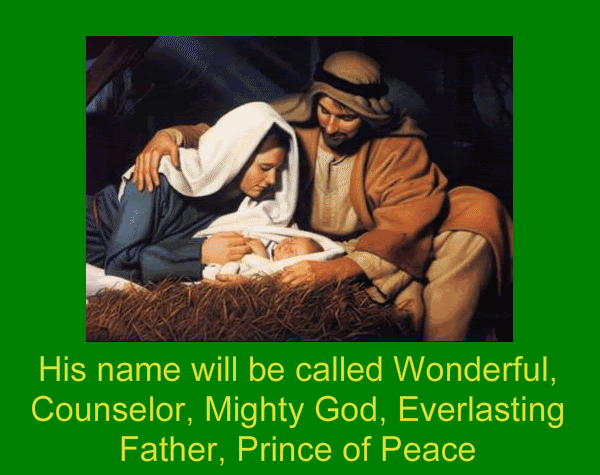
When Rome was a great Empire ruled by Caesar Augustus and Israel was governed by King Herod, in the village of Nazareth lived Joseph and Mary. Joseph was a carpenter and Mary was a young virgin who would become his wife. Mary told Joseph of a dream in which she was visited by an angel who told her she had been chosen to bear the Son of God and his name was to be Jesus.
One day the emperor sent notice that all persons were to register for a new tax. They were instructed to return to the towns of their birth. Joseph and Mary left Nazareth for Bethlehem. Mary who was with child, and close to the birth, rode on a donkey while Joseph walked beside her. They traveled for many days and only rested at night.
So Joseph and Mary went up into the hills and found the caves. In one cave was a stable room. Joseph cleaned it and made beds of fresh hay. He found a feeding trough which he cleaned and filled with hay to use as a crib. The next night Mary gave birth to a son and they named him Jesus, as the angel had said.
When the child was born a great star appeared over Bethlehem that could be seen for miles around. In the fields nearby shepherds were tending their flocks. An angel appeared to them surrounded by bright light. The shepherds were frightened and tried to run.
"Fear Not," said the angel, "For I bring you tidings of great joy. For unto you is born this day in Bethlehem - a Saviour who is Christ the Lord."
"And this shall be a sign unto you. You shall find the babe wrapped in swaddling clothes and lying in a manger."
Suddenly the sky was filled with angels, praising God and saying, "Glory to God in the Highest, and on Earth peace, good will toward men."
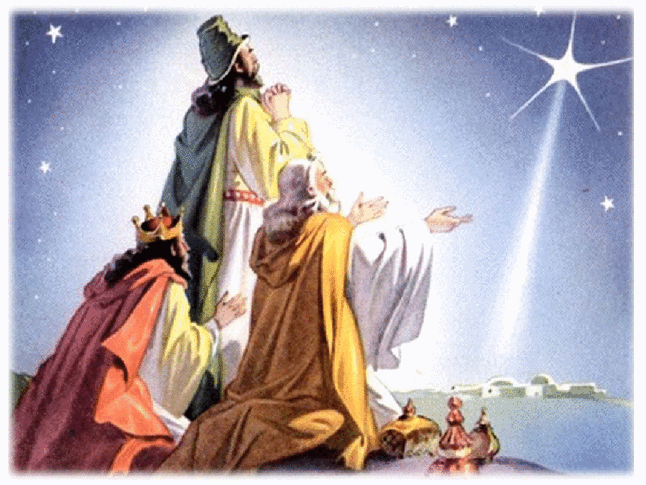
Merry Christmas Eveyone


 The history of Christmas, however, is hardly a continuum. It is a varied and riotous story. The middle of winter has long been a time of celebration around the world. Centuries before the arrival of the man called Jesus, early Europeans celebrated light and birth in the darkest days of winter. Early Europeans marked the year's longest night -- the Winter Solstice -- as the beginning of longer days and the rebirth of the sun. They slaughtered livestock that could not be kept through the winter and feasted from late December through January. Many peoples rejoiced during the winter solstice, when the worst of the winter was behind them and they could look forward to longer days and extended hours of sunlight.
The history of Christmas, however, is hardly a continuum. It is a varied and riotous story. The middle of winter has long been a time of celebration around the world. Centuries before the arrival of the man called Jesus, early Europeans celebrated light and birth in the darkest days of winter. Early Europeans marked the year's longest night -- the Winter Solstice -- as the beginning of longer days and the rebirth of the sun. They slaughtered livestock that could not be kept through the winter and feasted from late December through January. Many peoples rejoiced during the winter solstice, when the worst of the winter was behind them and they could look forward to longer days and extended hours of sunlight.
 Yule or Yule-tide is a winter festival that was initially celebrated by the historical Germanic peoples as a pagan religious festival. The Norse in Scandinavia celebrated yuletide, and each family burnt a giant log and feasted until it turned to ash. The festival was originally celebrated from December 21st through January. It was later absorbed into, and equated with, the Christian festival of Christmas. The festival was placed on December 25th when the Christian (Julian) calendar was adopted. Some historians claim that the celebration is connected to the Wild Hunt or was influenced by Saturnalia, the Roman winter festival.
Yule or Yule-tide is a winter festival that was initially celebrated by the historical Germanic peoples as a pagan religious festival. The Norse in Scandinavia celebrated yuletide, and each family burnt a giant log and feasted until it turned to ash. The festival was originally celebrated from December 21st through January. It was later absorbed into, and equated with, the Christian festival of Christmas. The festival was placed on December 25th when the Christian (Julian) calendar was adopted. Some historians claim that the celebration is connected to the Wild Hunt or was influenced by Saturnalia, the Roman winter festival.





























 On the sixth day of Christmas,
On the sixth day of Christmas, On the seventh day of Christmas,
On the seventh day of Christmas, On the eighth day of Christmas,
On the eighth day of Christmas, On the ninth day of Christmas,
On the ninth day of Christmas, On the tenth day of Christmas,
On the tenth day of Christmas, On the eleventh day of Christmas,
On the eleventh day of Christmas, On the twelfth day of Christmas,
On the twelfth day of Christmas,.gif)






